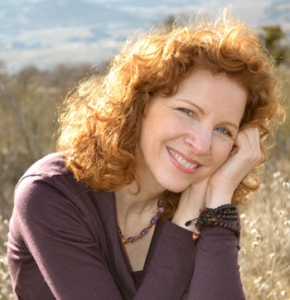Recipe for JOY
 Do you know what makes you happy? When was the last time you felt Joy? Even though happiness and joy are closely related, they are not the same. Happiness is more of an intellectual state of mind. Joy is felt in the heart and soul. When you feel joy, happy is almost always there, yet you can say “I’m happy” and not feel joy… Joy comes from a deeper state of consciousness and requires going deeper, past the intellectual mind. Joy, like peace, resides in all of us, but requires us to take time to actively cultivate it through personal growth and self-realization. It can start with the ability to identify what makes us happy in our daily life. A recent study at the University of California in San Diego showed that “people don’t devote enough time to thinking seriously about how they spend their life and how much of it they actually enjoy,” says David Schkade, PhD, a psychologist and professor of management. Dr. Schkade and his colleagues interviewed 900 working women. They were asked to write down everything they’d done the day before. When they looked at their lists they were amazed to see how much of their time was spent doing things they didn’t like doing. Of course, our days are full of things that we have to do to maintain a quality of life, from taking out the trash to paying bills; all necessitate a level of obligation to get certain things done. It’s all about balance. If you have a “to do” list, does it include anything geared toward cultivating happiness?
Do you know what makes you happy? When was the last time you felt Joy? Even though happiness and joy are closely related, they are not the same. Happiness is more of an intellectual state of mind. Joy is felt in the heart and soul. When you feel joy, happy is almost always there, yet you can say “I’m happy” and not feel joy… Joy comes from a deeper state of consciousness and requires going deeper, past the intellectual mind. Joy, like peace, resides in all of us, but requires us to take time to actively cultivate it through personal growth and self-realization. It can start with the ability to identify what makes us happy in our daily life. A recent study at the University of California in San Diego showed that “people don’t devote enough time to thinking seriously about how they spend their life and how much of it they actually enjoy,” says David Schkade, PhD, a psychologist and professor of management. Dr. Schkade and his colleagues interviewed 900 working women. They were asked to write down everything they’d done the day before. When they looked at their lists they were amazed to see how much of their time was spent doing things they didn’t like doing. Of course, our days are full of things that we have to do to maintain a quality of life, from taking out the trash to paying bills; all necessitate a level of obligation to get certain things done. It’s all about balance. If you have a “to do” list, does it include anything geared toward cultivating happiness?
By taking responsibility to create a happier life, we can open the door of our hearts to experience joy. I have helped many of my clients and students create a recipe for joy in their life with many great success stories. Just like taking the time to grow wonderful foods to make a great recipe, it requires you to tend to your inner garden first by planting seeds of self-love. It takes a willingness and courage to take action on a daily basis. Often, happiness is sought through a hedonic approach, which is a more sensory oriented and passive approach, like thinking about the beach or eating a piece of chocolate. That works for the moment, but I encourage a eudemonic approach to joy and well being
A study led by Carol Ryff, PhD, a professor of psychology at the University of Wisconsin-Madison, compared the difference between the two. “Eudaimonic well-being is much more robust and satisfying than hedonic happiness, and it engages different parts of the brain,” says Richard J. Davidson, PhD, of the University of Wisconsin-Madison. “The positive emotion accompanying thoughts that are directed toward meaningful goals is one of the most enduring components of well-being.” The word “Eudaimonia” was first used by Aristotle; from the Greek eu (“good”) and daimon (“spirit” or “deity”). Aristotle believed that we are all born with a unique gift and we should strive toward being our “golden self” or the best person we were born to be, not to just merely get through life, but to live a happy, meaningful life. This requires a commitment to your daily practice of self-reflection. The above study also showed the health benefits of eudemonia for the body. The women, who were purposefully engaged in life, pursued self-development activities like yoga and meditation practice; weighed less, slept better, and had fewer stress hormones.
Beyond just presence, JoyFull yoga offers other important ingredients for a recipe for Joy to address the body, mind and spirit. The unique blend of specific poses, breath work, sound, and movement meditation, not only improves circulation, energy flow, and brain function but also facilitates the letting go of resistance and judgments so we can embody our “golden self.” Dr. Schkade stated that by changing just one hour of your day, you can begin to increase your level of happiness. I will add that by taking responsibility to embrace and deepen your connection to the truth in your heart and your soul calling, you can go beyond happy to joy. Here are a few tips to get you started:
- Make a list of the things that bring you “joy.” Simple pleasures, like an undisturbed bubble bath, or taking time to read something that inspires you, etc…. You can add to the list over time, but start with 5 to 10 good ones. Schedule at least 1 hour of your day with 1 or more of these activities. Put it on your “to do” list,
- Pick one day a week where you get to spend most of the day with people you enjoy and doing things that make you feel happy and good, inside and out.
- Make yourself a priority in your life. You don’t have to be sick to give yourself time!!! Take action every day towards your self-care inside and out, like yoga, meditation, prayer, a peaceful walk. Everything else can wait.
- Every day, look for opportunities to practice self-love. Starting your day with self-reflection, meditation, yoga, etc. is a powerful act of Self-love. — An act of self-love is an action that makes you feel good about yourself long term, like establishing boundaries with the people in your life, being able to say no, respecting your feelings & needs, taking your vitamins, taking time to prepare a wholesome meal for yourself, etc…..
- Take time to create and go over your gratitude list. Take at least 3 deep breaths just dwelling in gratitude every day.
- Every night, reflect on your day, forgive yourself for not being perfect and celebrate where you were successful in accomplishing an act of self-love and self-care. Set your goal to accomplish 3 or more each day.
 See how your life begins to blossom and live each day with more joy and en-joy your life! Remember to breathe in joy, live in gratitude. www.joyfull-yoga.com; 899-0707. © 2001-2012 Louise is an international inspirational speaker, author, creator of JoyFull Yoga and JoyFull living coaching. She owns JoyFull Yoga LLC in Jacksonville where she offers private sessions and group classes including Transformative Sound Healing sessions. Email us your questions at info@joyfull-yoga.com
See how your life begins to blossom and live each day with more joy and en-joy your life! Remember to breathe in joy, live in gratitude. www.joyfull-yoga.com; 899-0707. © 2001-2012 Louise is an international inspirational speaker, author, creator of JoyFull Yoga and JoyFull living coaching. She owns JoyFull Yoga LLC in Jacksonville where she offers private sessions and group classes including Transformative Sound Healing sessions. Email us your questions at info@joyfull-yoga.com
 Louise is a spiritual teacher of Personal Growth & Empowerment. As a JoyFull Living Coach she offers effective, transformative tools, guidance and inspiration to assist you in releasing the attachment to struggle, pain and suffering. She empowers and inspires you to partner with yourself for success with personal and health goals, offering tools and strategies to live your best life NOW. She is also the owner and creator of JoyFull Yoga, which has it’s home here in Jacksonville. 541-899-0707. To find out more, please visit
Louise is a spiritual teacher of Personal Growth & Empowerment. As a JoyFull Living Coach she offers effective, transformative tools, guidance and inspiration to assist you in releasing the attachment to struggle, pain and suffering. She empowers and inspires you to partner with yourself for success with personal and health goals, offering tools and strategies to live your best life NOW. She is also the owner and creator of JoyFull Yoga, which has it’s home here in Jacksonville. 541-899-0707. To find out more, please visit